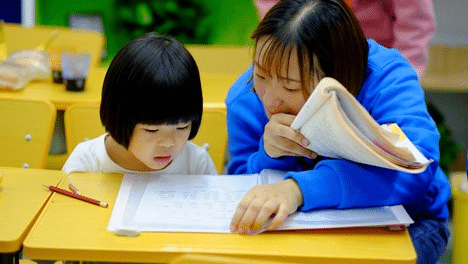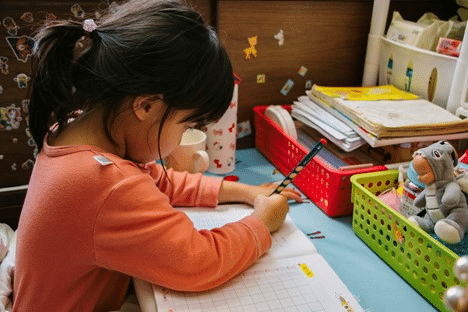What Teachers Should Know About the Science of Reading

Over 25 million children in the US cannot read proficiently. Reading difficulties are most common in children with ADHD and dyslexia. Learning to read is a complex process, and structured literacy is a comprehensive approach to literacy instruction that is effective for all students but essential for students with dyslexia. Structured literacy is based on the science of reading.
Here, we cover in detail the science of reading, structured literacy, and how they support children with learning differences.
Before getting into the benefits of using decodable books in kindergarten and first grade, we will first explain how they work.
What Is the Science of Reading?
The science of reading is the research that reading experts, especially cognitive scientists and psychologists, have conducted to demonstrate the methods that best help children to learn to read.
The science of reading helps us understand the cognitive processes that are essential for fluent reading.
The science of reading answers many questions, including:
- What are the skills involved in reading?
- How do children learn to read fluently?
- Why do some children struggle with reading?
How is reading related to spelling and writing?
How Is Phonics Involved in the Science of Reading?

Phonics is an essential part of the science of reading approach. But, the science of reading is not limited to the idea of phonics. Phonics is a teaching method that involves the relationship between sounds and their spellings. It’s an essential part of teaching struggling readers how to read because it helps them map sounds onto spelling.
Research shows that developing a strong understanding of phonics enhances reading ability as they help children hear and use different sounds to distinguish one word from another. The understanding of phonics complements the other aspects involved in the science of reading. But, as we discussed earlier, there’s much more to the science behind reading than just phonics. The other essential facets include phonemic awareness, vocabulary, fluency, and comprehension.
What Is Structured Literacy?
Structured literacy is a comprehensive approach to teaching oral and written language. Research has shown that it’s effective for all children but is essential for dyslexic children. It’s an umbrella term used by the International Dyslexia Association (IDA).
Structured literacy merges decoding, encoding, sight words, phonological awareness, fluency, and comprehension. It also teaches children letter knowledge, types of syllables, spelling rules, and meaningful parts of words. Unlike balanced literacy, skills with a structured literacy approach are taught in a direct way.
You can think of structured reading as a research-based method of instruction that helps children that struggle to read. With structured reading, teachers introduce children to new skills in a logical manner.
It doesn’t involve one particular method.
The structured literacy components include:
- Phonology – the understanding of sound patterns and their meanings
- Sound-Symbol Association–the understanding of mapping sounds to letters
- Syllable Instruction – knowing how to divide words into syllables
- Syntax – understanding grammatical orders
- Semantics – understanding the meaning of words
- Morphology – the study of the internal structures of the words
What Is the Difference Between Structured and Balanced Literacy?
The balanced literacy approach is characterized by the use of authentic texts. It focuses on shared and guided reading. On the other hand, structured reading teaches the structure of language through explicit, systematic, diagnostic, and cumulative instruction in phonological awareness, phonics, syllable instruction, morphology, semantics, and syntax.
Balanced literacy teachers teach students the important components of reading through:
- Read aloud
- Shared reading
- Guided reading
- Independent reading
Final Words
Structured reading is based on the science of reading that allows teachers to incorporate essential components to an effective reading program into their daily lessons. It’s important because it helps people understand the cognitive processes that are imperative for successful reading acquisition.
Want to Read more from our growing Resource Libary ?
Learn More about Reading Teacher:
Reading Teacher access includes 100 animated, interactive stories across 25 different levels. Each story introduces or reviews a new phoneme, new words, and special (high frequency) words.
Each new word throughout the program is then repeated at least five times in the book in which it first appears, and then five more times in the next ten books. Prior to starting each story, children are prompted to select the ‘Listen’ or ‘Read’ option which allows for multiple exposures, experiences, and allows for additional reinforcements of growing skills. Over the course of our program, children will learn over 337 decodable words and gain confidence in their reading abilities. Reading Teacher aligns with the science of reading through a tailored, sequenced approach. Our reading program blends the 5 components of phonemic awareness, phonics, vocabulary, fluency, and comprehension into a simple, straightforward program. Each of the 25 levels of our programs is specifically crafted to build on the previous level's skills to lay the foundation in helping children with various reading abilities meet their unique needs through scaffolding and differentiation.
Start Teaching Reading for Free Now!
Access Level 1’s four interactive stories and the accompanying supplemental resources to teach elementary students how to read. No credit card is needed. Join the 42,635 teachers and students using our reading program.
